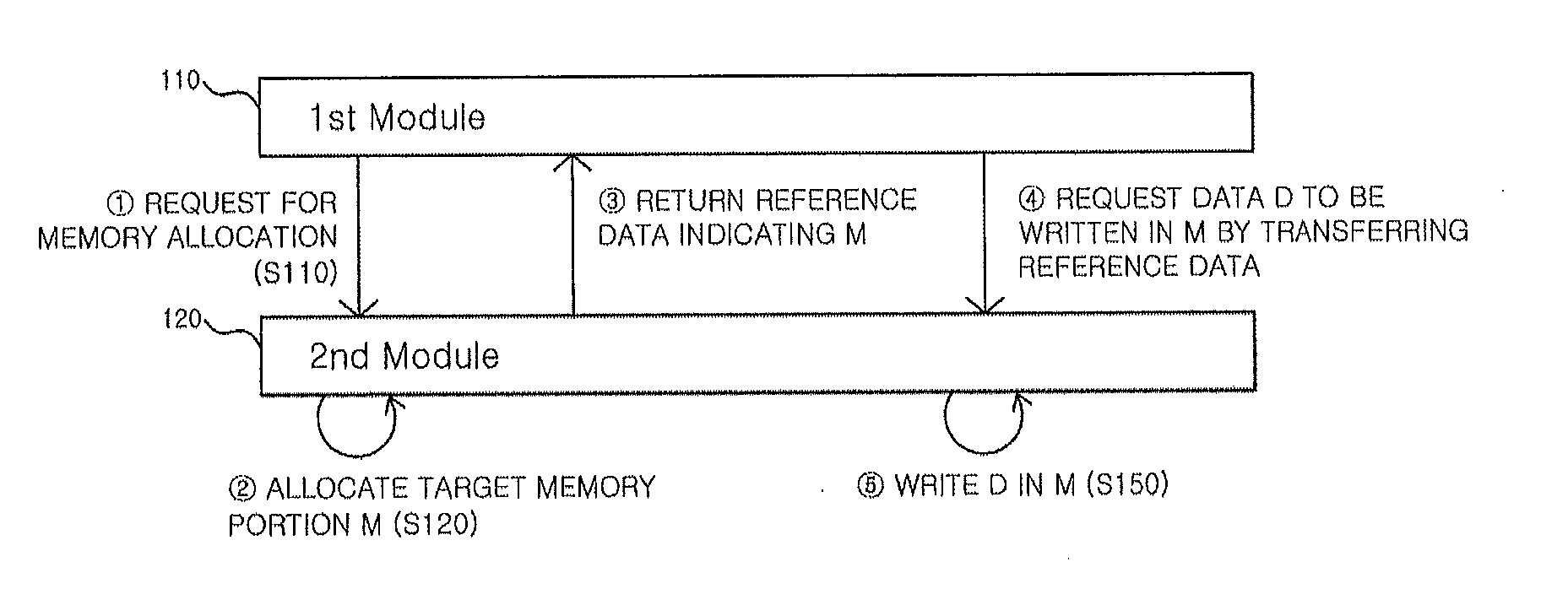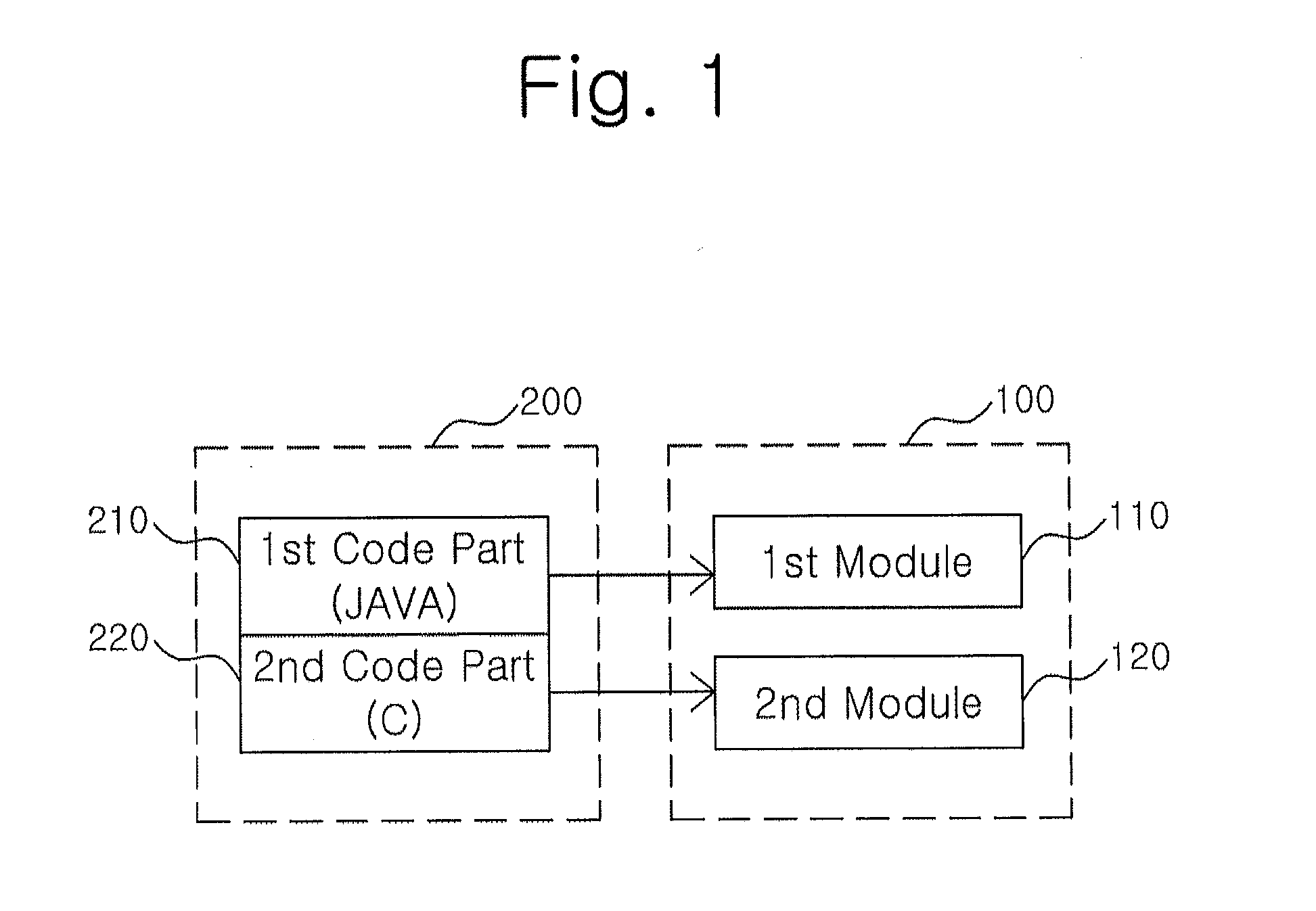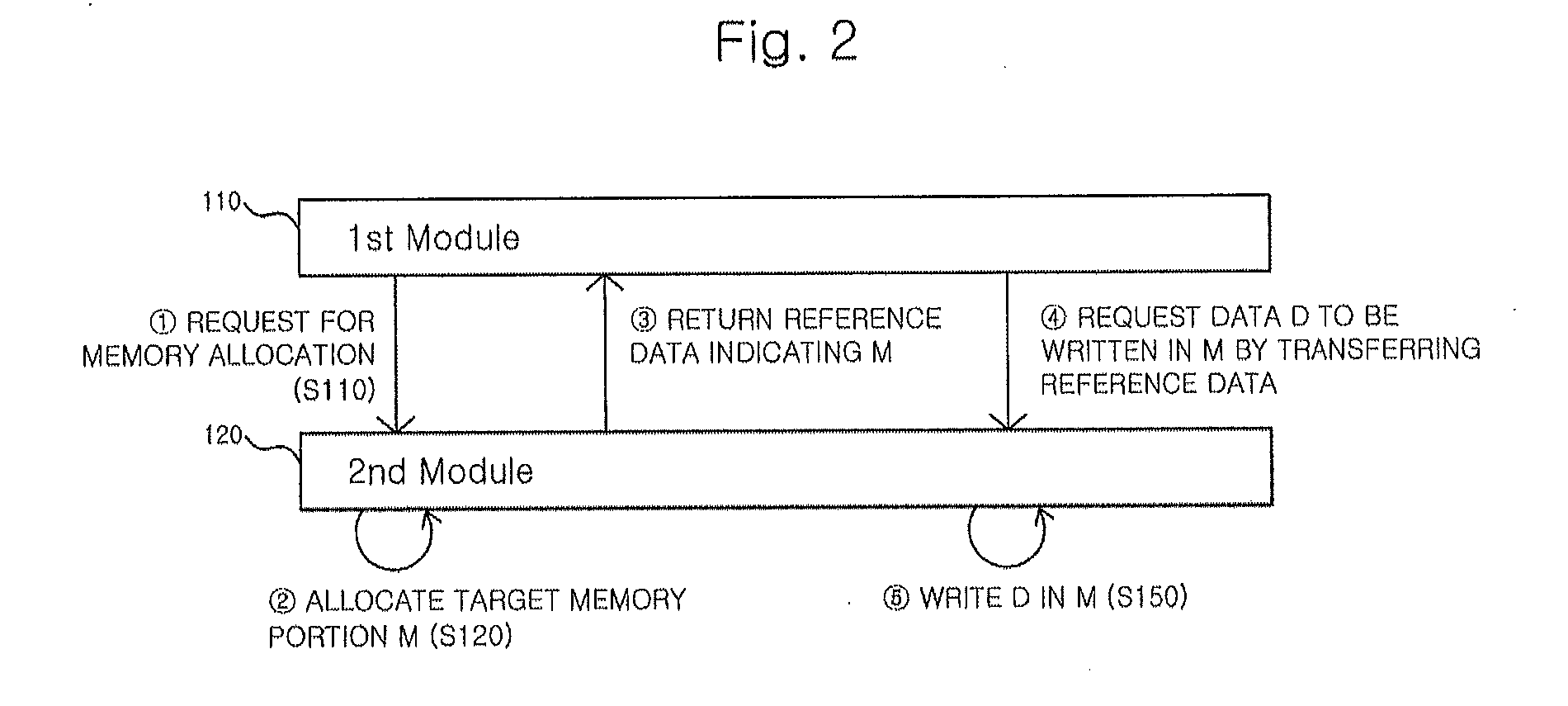Method and system for processing memory
- Summary
- Abstract
- Description
- Claims
- Application Information
AI Technical Summary
Benefits of technology
Problems solved by technology
Method used
Image
Examples
Embodiment Construction
[0036]The present invention has other advantages associated with the operation of the present invention and objects that may be realized by the practice of the present invention which will be apparent from, or are set forth in greater detail in the accompanying drawings, which are incorporated herein, and in the following Detailed Description of the Invention, which together serve to explain certain embodiments of the present invention.
[0037]Herein, it will be understood that, when an element is referred to as “transmitting” data to another element, the element can not only directly transmit data to another element but also indirectly transmit data to another element via at least one intervening element.
[0038]In contrast, when an element is referred to as “directly transmitting” data to another element, the element can transmit the data to another element without an intervening element.
[0039]Embodiments of the present invention will now be described more fully hereinafter with refer...
PUM
 Login to View More
Login to View More Abstract
Description
Claims
Application Information
 Login to View More
Login to View More - R&D
- Intellectual Property
- Life Sciences
- Materials
- Tech Scout
- Unparalleled Data Quality
- Higher Quality Content
- 60% Fewer Hallucinations
Browse by: Latest US Patents, China's latest patents, Technical Efficacy Thesaurus, Application Domain, Technology Topic, Popular Technical Reports.
© 2025 PatSnap. All rights reserved.Legal|Privacy policy|Modern Slavery Act Transparency Statement|Sitemap|About US| Contact US: help@patsnap.com



